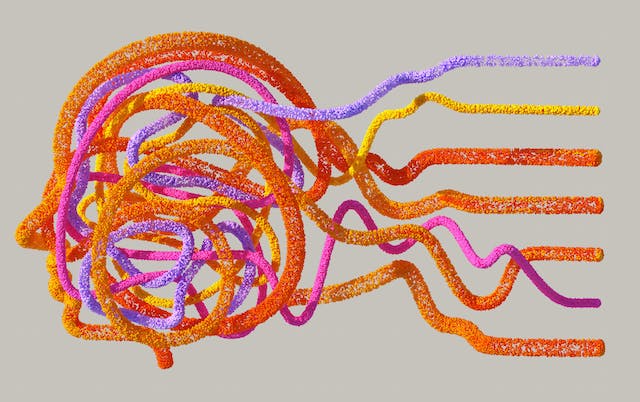UX card sorting is a tried and tested technique that has consistently optimized UX research. UX research is vital to the quality of a UX designer’s work. Simply put, UX designs without thorough UX research tend not to make a positive impact on their users.
Due to the importance of effective UX research, both for businesses and brands, UX researchers must understand their users completely. UX researchers have thus created techniques to transform valuable insights about their users into actionable data.
Within our actionable guide, we shall explore the relevant terms that relate to card sorting. We shall also reveal how UX researchers conduct a card sort and how to analyze the following data.

What Is UX Research?
Before we delve into the ins and outs of card sorting, it is essential to understand certain concepts. These concepts are UX research, information architecture, and user mental models.
To start, we shall examine the meaning of UX research and its importance.
UX research involves the gathering of valuable insights about users’ needs, beliefs, attitudes, desires, and pain points. It has immeasurable benefits for the human-centered design process of a digital product.
Through observational techniques and critique methodologies, UX researchers can differentiate what users say they need and what they actually need.
The only way to build an engaging, intuitive product is to involve your users actively in the development process. This is where card sorting comes into the picture, but we shall touch on this more momentarily.

What Is Information Architecture?
Information architecture (IA) aims to categorize, structure, and label content in a clear, relevant way.
It’s a crucial element of the logical navigational structure that will enable your users to find what they’re looking for. It also optimizes a product’s consistency, which is vital to a user’s enjoyable, intuitive experience.
Information architecture is split into two components:
- Structure: this involves the arrangement of content categories and hierarchies.
- Labeling: this involves using words to systemize and represent said content categories and hierarchies.
When you combine both components, you create an efficient navigation system for your users that’s consistent and easy to use.
In other words, you can’t create effective UX designs without logical information architecture.
With regards to card sorting, it is highly useful when it comes to creating an effective information architecture. Card sorting uncovers how your users interpret your product’s content.
What Is a User Mental Model?
A mental model is a broad term that encompasses any concept or worldview that an individual may have. In essence, mental models are individuals’ perceptions of the world that help them make sense of its unfamiliarities.
So, with that in mind, it’s unsurprising that a user mental model isn’t extremely dissimilar.
A user’s mental model is based on a user’s experience with a product. A user will utilize this experience to base their expectations on how they think they should use your product.
By referring to their past interactions with similar digital products, the user can streamline their interactions with your new product.
A product with similar interaction patterns and information architecture will reduce a user’s learning curve.
Card sorting is great for understanding your users’ mental models and how they organize predetermined knowledge from past experiences.

What Is Card Sorting in UX?
UX researchers utilize card sorting to ask users how they organize information into logical groups. This data is then used to design effective information architectures, workflows, and navigational structures of a digital product.
So, what is card sorting in UX?
Users receive an assortment of labeled cards, which they will then sort into groups that make sense to them.
Card sort data can be acquired using a number of different ways. Here are a few of the most common ways of conducting a card sort:
- You can use actual cards.
- You can use pieces of paper.
- You can use an online tool such as OptimalSort.
- You can even use Posit-it notes!
Remember that card sorting won’t clarify the ideal final information architecture for your product. However, by discovering how your users would expect to navigate through your content, you can identify graphical trends.

3 Types of Card Sorting
There are several different types of card sorting methods. Which method you choose should depend mainly on what you’re trying to find out.
1. Open Card Sort
An open card sort gives your users autonomy regarding the grouping and categorization of information.
Once they’ve organized the cards into groups, they must then label each assortment. This method works well for generative research and is great if you’re unsure how to organize your product’s content.
This method allows for a more accurate portrayal of a user’s mental model. By granting the user full autonomy over the card sort, you can discover new concepts.
Although giving full authority to your users seems like the best option, there is a prominent disadvantage.
Receiving copious amounts of unique categorizations may result in incomprehensible patterns.
2. Closed Card Sort
Closed card sorting involves users organizing the cards you provide into predetermined sitemaps.
Sorting cards into already labeled categories is perfect for a closed card sort. This is because a closed card sort aims to clarify that your existing categories seem logical to users.
Your users may be more limited through a closed card sort, but this is ideal for evaluative research. This method is more likely to produce clear patterns that reveal which content is best suited to a particular category.
There is a notable disadvantage of closed card sorting sessions. It doesn’t provide a completely accurate portrayal of a user’s mental model. Consequently, you risk missing valuable information about your target audience.
3. Hybrid Card Sort
As its name may suggest, hybrid card sorting combines elements from open and closed card sorts.
In a hybrid card sorting session, your participants will sort cards into provided categories as well as their own categories.
A hybrid card sort grants you access to real users’ inputs regarding potential category labels for your products. Providing you select a diverse range of participants, these insights can refine the enjoyability of your content. Naturally, the more people that enjoy your product, the more successful it will be.
Hybrid card sorting can also indicate that your pre-defined labels make sense to real users.
The downside to hybrid card sorting is that it is time-consuming and potentially complex for the participants. Your participants will face a choice between using the pre-existing categories or using their own, which can cause confusion/hesitation.

4 Methods of Card Sorting
Now that you know the types of card sorting available, the next step is to decide which method to use.
Below, we shall consider moderated and unmoderated card sorting sessions. Additionally, we shall also examine the differences between physical card sorting and digital card sorting.
1. Moderated Card Sorting
Not unexpectedly, a moderated card-sorting session occurs when the researcher is physically present. The researcher will debrief the participants, encourage them to think aloud, and ask follow-up questions regarding their choices.
Moderated card sorting is best if you value the quality of your data over the quantity of your data. Through your follow-up questions, you will receive qualitative insights that reveal the rationale behind your users’ categorizations.
However, moderated card sorts are usually more costly and time-consuming.
2. Unmoderated Card Sorting
Unmoderated card sorting sessions occur when participants organize your product’s content remotely and without the researcher’s supervision. Unmoderated participants will often use an online tool to organize your product’s content.
An unmoderated card sort is best if you prioritize garnering a large quantity of data. You can test more participants at a quicker rate without the risk of excessive expenses.
However, unmoderated card sorts may not provide the most useful qualitative insights.
3. Card Sorting: Physical Cards
Participants will organize topics on physical cards, creating their groupings on a large workspace.
All the participants have to do is stack their cards into piles on their workspace.
A significant benefit of using physical cards is that it’s incredibly easy to understand. Participants can flexibly manipulate an extensive amount of cards and can even start over with ease.
The downside to using physical cards is that these sessions require a considerable amount of coordination. Additionally, the data from physical cards must be manually documented and analyzed.
4. Card Sorting: Digital Cards
Digital card sorting refers to using software to simulate topic cards.
Participants must drag and drop these topics into categories on their screens.
Digital cards can be coordinated quickly, and they’re easier to implement. This makes them ideal for small/remote participant pools.
However, using digital cards can require technology training, and the usability of the tool can impact the session’s success.

How To Conduct Card Sorting (UX)
Regardless of which card sorting method you use, you must plan how you execute your sessions to ensure reliable data.
Here’s how to effectively conduct a card sorting session.
The Card Preparation
To start, you must create a list of content topics. Topics can be phrases or words and can be quite general or specific.
As a recommendation, we suggest that you limit yourself to 50-60 topics that represent the main content of your product.
You must then decide the type and method of card sorting that will best suit your research.
The Session Set-up
You should allocate an hour (at least) for each session. The duration of your sessions may be longer, depending on the number of cards you have.
You must then plan your space. For physical card sorts, you must ensure participants have enough room to organize your cards.
For digital card sorts, you must ensure your participants have a good internet connection.
As a suggestion, you should include a notetaker.
Hosting the Session
Start by debriefing your participants, making it perfectly clear what you want from the session.
Encourage your participants to think aloud and minimize interruptions. Allow your participants to add/exclude cards that they think belong (or don’t belong) on your site’s pages.
For digital card sorts, email the participants a link to your study with appropriate instructions.
Prompt your participants to utilize a comment box to record any observations or questions.

Analyzing Your Data
You must analyze the qualitative insights derived from users’ comments and experiences. This is how you ascertain the ease and enjoyability of the users’ experiences.
Additionally, you must analyze the quantitative data derived from the card sorting results that appear together most often. This is how you identify patterns in the users’ experiences.
Once your analysis is complete, you can share them with your team and stakeholders.
Tips for Conducting an Effective Card Sort
Tips for Conducting an Effective Card Sort
Before we examine how you should analyze the results of your card sort, it’s essential to consider some helpful tips.
Listed below, these tips will help you refine your card-sorting methods!
- Carefully select the number of cards you present.
- Choose the right participants that reflect your target audience.
- Provide clear instructions.
- Encourage your participants to think out loud to provide valuable insights into their decision-making process.
- Conduct multiple rounds of card sorting to validate your results and refine your information architecture.
- Consider digital tools for convenience, flexibility, and efficient data collection.
UX Research: Knowing Your Users
Now, you know the impact techniques like card sorting have on your UX research.
You should take away from this guide that knowing your user on a psychological level is extremely beneficial. Understanding your users’ needs, motivations, beliefs, attitudes, past experiences, and desires is the only way to immense success.
That being said, it is time to see the effects of effective UX card sorting and research on proven products.
Consider Page Flows.
Page Flows is an incredibly useful resource for interaction design inspiration. Specializing in a range of different sectors, from food delivery to finance, Page Flows excels at finding new, creative solutions.
Page Flows has garnered over 1,000 happy customers from revered brands via our unparalleled user flow design decisions. We pride ourselves on our ability to ensure users get exactly what they came for.
Get started today to access our growing library of user flow recordings and finally stay up-to-date with current design trends.





